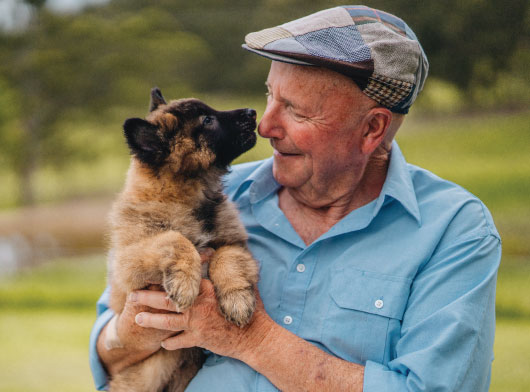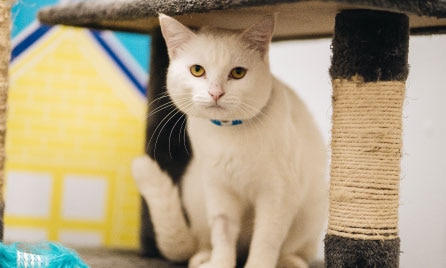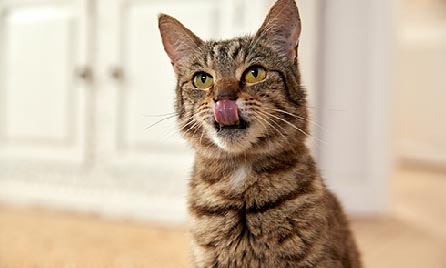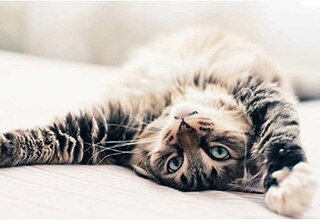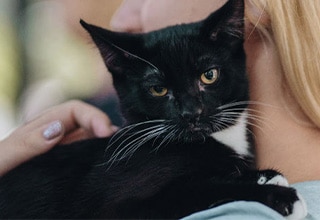- text
-
Dr Harry Cooper (AR No.1000933) is an Authorised Representative of PetSure (Australia) Pty Ltd (AFSL 420183). Any advice provided by Dr Harry Cooper in relation to Everyday Pet Insurance is general only and does not take into account your individual objectives, financial situation or needs.
Dr Harry: What to consider when getting a cat.
Right from the get- go, I have to tell you; I like cats! They are so very different from dogs. That’s why for so many people, cats are the best choice when you need something a little more interactive than your Goldfish.
The difference between cats and dogs.
Many people, simply because of the circumstances they live in, cannot physically own a dog. There are limitations with where they live, exercise, the regular brushing and grooming and the need to spend time actually interacting with the dog. The biggest problem of all is noise. Cats don’t bark. They can have a very loud ‘meow’, but it’s nothing compared to the incessant barking of a dog, shut in a unit and bored out of its mind. It finds the only means of expressing this frustration is to bark, and bark they do!
Short haired cats.
Over the years, I have suggested to so many clients that they can in fact get a cat, not just any cat, but one that is very dog-like in it’s disposition. One that will do most things that a dog will do, even walk on a lead with a little perseverance. The objective then, is to get a ‘dog like’ cat. It’s easy, you go for one of the Asiatic breeds.
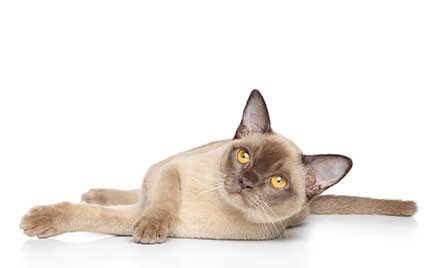
Let me name a few:
Burmese
Siamese
Abyssinian
These are all short-haired felines. I bred both Siamese and Burmese for several years, and to me, they are both hard to beat. The Burmese are the most dog-like, and they come in a large range of colours. They are the ultimate, ‘She’ll be right', laid back cat ever.
There is only one thing better than a Burmese, and that is two! The Siamese, on the other hand, is a bit more demanding. Their ‘meow’ can become a little bit much as they seem to command your attention and, of course, most owners are only too happy to give it! The Abyssinian (Abby) is a busy cat. It carries its own ‘notebook’, and once the household is up and running, so are they. They have a list of things to do and ‘get out of the way’. Yep, an active cat.
Some people have crossed the Siamese with the Burmese to produce the Tonkinese. I suppose that’s like having an each-way bet. If you look hard enough you may also be able to find yourself a ‘moggy’ kitten, with all the go-getter attitudes that these pure breeds have, but you’ll need to look and choose carefully.
Long haired cats.
Then, of course, there are the long hairs and semi longhairs. Persians have been around forever, but there is a lot of work in a daily groom. You may be better off with a Chinchilla, a Burman, or a Rag Doll. In recent years, the Rag Doll has become enormously popular. It is a hybrid, yep, to put it bluntly, a ‘designer cat’ a fusion of pure breeds to create a cat with the ultimate ‘floppy’ attitude, just like its namesake. It’s hard to keep up to date with the number of cat breeds that keep popping up on the market. I think the feline fancy has been doing this selective cross breeding for a lot longer than the dog people have.
Hypoallergenic cats.
We even have cats for those that are allergic to cat hair. These are the Rexes, Cornish Rex, with a Siamese-like body and curly coat that doesn’t shed and the somewhat comical looking Devon Rex with an appearance like ‘E.T’, and similar coat. Interestingly, they both occurred spontaneously in the UK, in two entirely different litters of kittens. They don’t shed, and their coat feels a little like velvet. I quite like them, but beware their name should probably be ‘WRECKS’ not ‘REX’, they are mischievous as kittens.
Then, of course, there are the breeds with no hair. ‘Dr. Evil’ carried one around in the Bond movies; a Sphinx. The problem with this breed is that every other cat thinks they are hot water bottles and lies all over them. Yes, they feel warm to touch. With no hair, they still have natural exudations which make their way onto the skin surface. These are greasy and collect dirt. You need to have a regular supply of baby wipes to gently smooth over the skin, often a couple of times a day.
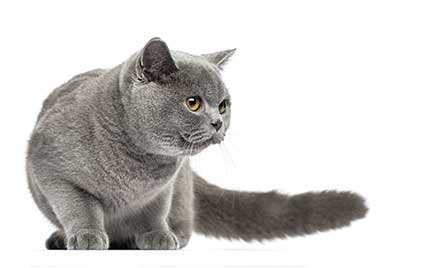
There are other breeds like the Maine Coon, our biggest domestic cat, and the tailless Manx from the Isle of Man. There’s also the Bengal, with its striking Cheetah-like coat, and the quizzical face of the British Shorthair. To each his own, and my advice, as it was in the dog world, is to visit a cat show and look at and talk to the various breeders whose cats will be on show. Take all that is said with the proverbial grain of salt, for like me, their views on certain breeds are very prejudiced.
Cats with different temperaments.
If it is just a cat to have for the sake of company, or perhaps rodent control, then you are probably better off with a moggy, whose real ‘name’ is British Domestic Shorthair. They tend to lie around the place and are very good at temperature regulation. Yes, cats will always find the warmest place in your house. They don’t enjoy being cold, and so having a cocoon or an igloo in which they can sleep is a good idea. You can even get heated pads. On the hottest of days, they will also find a spot somewhere in your house where the temperature is ‘just right’, like the tiles in the bathroom.
A note of caution here: cats who are intent on finding somewhere to sleep will inadvertently shut themselves in cupboards, particularly when kittens. Yes, they can be worse than children, because they can open doors with their paws. The range of colours is enormous, from solid blacks through to the really pretty tortoiseshells, which are always females (though over the years I have found two that were male, neither was fertile). Males tend to be a little more active and keen to explore their environment. On the other hand, females are more of the stay at home and cuddly types.
Behaviours in cats.
Perhaps one of the biggest drawbacks of owning a cat is scratching and chewing. If you value your furniture and your curtains, then beware. If you have a collection of indoor plants, then look out too, they will become play toys. Likewise, fresh flowers can be a real headache.
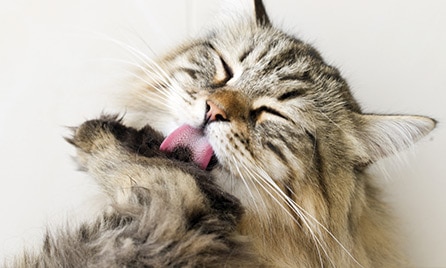
The ‘I’ll just play with it’ attitude of young kittens often becomes ‘I’ll have a chew as well’. Liliums are highly toxic, cyclamen are not far behind, and even a maidenhair fern can cause serious vomiting. Mind you, this is one thing I have always felt that cats really enjoyed. Yep. Vomiting! Sorry to bring that up, and sorry for the pun as well. Cats possibly picked this up from the ancient Romans, who were often in the habit of overeating, and then … well, I need not describe it. As much as fortnightly, they will find your whitest piece of carpet or your beautiful cream lounge and quite happily throw up all over it. Without dabbling in colours, it’s usually greenish yellow, and stains ‘forever’.
It is in my view normal, and just their way of ‘cleaning out stomach contents’. The colour is of course bile. They need access to grass to help perform this ritual, so an offering perhaps weekly of ‘cat grass’ allows you to monitor the situation and keep the fractious feline shut in the spare room until it’s all over (tongue in cheek, but true nevertheless).
Scratching can be devastating to anything and everything. You will need to install a scratching post before you bring home your cat. Cats are probably the best hunters we have in domestication, and with needle sharp teeth and claws they can wreak havoc on our native wildlife, both birds and reptiles. To keep the claws sharp, they tear at anything they can get their feet onto. The aimis to remove the blunt outer ‘shell’ of the nail and expose the sharper one underneath.
A final note.
As a child growing up on the banks of the Lane Cove River, with a view straight down the harbour to the ‘Coathanger,’ we always had a black cat. Dad had literally ‘picked it up in the street’. There was always one there to combat the rodents that were always around, particularly because we had poultry as well. So as kids, a cat was part of the family and their final resting places are still there alongside the family home. In those days, cats were like a lemon tree, you had to have one. I went on to breed and show cats for many years.
In the next article, I will be writing amongst other things on where to get that kitten/cat, what to do when you get that pussy cat home. Feeding, introducing cats to dogs, training and playtime will all be covered. Most importantly, from my perspective, is how you manage that cat of yours to prevent it decimating our environment.
Why pick Everyday Pet Insurance?
Related articles.
- text
-
* Limits, waiting periods, exclusions and excesses may apply.
- text
-
# Policy Terms and Conditions, exclusions and limits apply. Benefit limit amounts vary by level of cover.
- text
-
‡ As long as we continue to provide the product, we'll offer renewal of your policy every year for your pet's life. Cover is subject to the terms and conditions of your renewing policy. See details in your PDS.
- text
-
= The gap is defined as the difference between the vet's invoice and the claim benefit under your policy. Policy terms and conditions apply. GapOnly® is only available at participating Vets. Please visit GapOnly® to search for GapOnly® enabled vets. GapOnly® is a trademark owned by PetSure (Australia) Pty Ltd (PetSure) (ABN 95 075 949 923, AFSL 420183).
- text
-
Everyday Pet Insurance policies entered into for the first time prior to 17 July 2023 and subsequent renewals of those policies are issued by The Hollard Insurance Company Pty Ltd ABN 78 090 584 473, AFSL 241436 (Hollard), arranged and administered by PetSure (Australia) Pty Ltd ABN 95 075 949 923, AFSL 420183 (PetSure) and promoted and distributed by Hollard’s Authorised Representative (AR) Woolworths Group Limited ABN 88 000 014 675, AR 245476 (Woolworths). Everyday Pet Insurance policies entered into for the first time on or after 17 July 2023 and subsequent renewals of those policies are issued by PetSure and promoted and distributed by PetSure’s AR, Woolworths. Any advice provided is general only and does not take into account your individual objectives, financial situation or needs. Please consider the Product Disclosure Statement (PDS) to ensure this product meets your needs before purchasing, or choosing to continue with the product. PDS and Target Market Determination available at insurance.everyday.com.au/pet-insurance.

